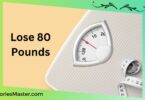Burning calories is an essential aspect of maintaining a healthy weight and lifestyle. It is a process of converting food into energy, which is then used by the body to perform various functions.
However, with the sedentary lifestyle that most people lead, it has become increasingly challenging to burn calories effectively. In this article, we will explore some effective ways to burn calories and maintain a healthy weight.
One of the simplest and most effective ways to burn calories is by engaging in physical activity. Exercise not only helps to burn calories but also improves overall fitness and health.
Activities such as brisk walking, cycling, swimming, and running are excellent ways to burn calories and improve cardiovascular fitness. Additionally, strength training exercises such as weightlifting and resistance training can help to build muscle, which in turn burns more calories even at rest.
How to Burn Calories? Understanding Calorie Burn
To understand how to burn calories, it is important to first understand what a calorie is. A calorie is a unit of energy that is used to measure the amount of energy in food and drinks. When we consume food and drinks, our bodies use the calories in those foods and drinks as fuel to power our daily activities.
The number of calories burned by the body is influenced by several factors, including age, gender, weight, height, and activity level. Generally, the more active a person is, the more calories they will burn.
There are three main ways that the body burns calories:
- Resting Metabolic Rate (RMR): This is the number of calories that the body burns at rest, just to keep the body functioning. RMR accounts for the majority of calories burned each day, typically around 60-75%.
- Thermic Effect of Food (TEF): This is the number of calories that the body burns to digest and absorb food. TEF accounts for around 10% of daily calorie burn.
- Physical Activity: This includes any movement that the body makes, from walking to running to lifting weights. Physical activity can account for anywhere from 15-30% of daily calorie burn, depending on the level of activity.
It is important to note that while exercise can help to increase calorie burn, it is not the only way to burn calories. Making small changes to daily habits, such as taking the stairs instead of the lift or walking instead of driving, can also help to increase calorie burn over time.
In summary, understanding how the body burns calories is key to developing a successful weight loss plan.
By focusing on increasing physical activity, making small changes to daily habits, and paying attention to overall calorie intake, it is possible to achieve a healthy weight and improve overall health and well-being.
Types of Activities That Burn Calories
Aerobic Exercises
Aerobic exercises are great for burning calories because they get your heart rate up and keep it elevated for an extended period. Some of the most effective aerobic exercises include:
- Running
- Cycling
- Swimming
- Dancing
- Jumping rope
- Rowing
These exercises can be done indoors or outdoors, and they can be modified to fit your fitness level. To get the most out of your aerobic workout, aim to do it for at least 30 minutes at a time, three to five times a week.
Strength Training
Strength training is another effective way to burn calories because it helps build lean muscle mass, which increases your metabolism. Some of the best strength training exercises include:
- Squats
- Lunges
- Deadlifts
- Bench press
- Shoulder press
- Pull-ups
When doing strength training, it’s important to use proper form and start with lighter weights before gradually increasing the weight as you get stronger. Aim to strength train two to three times a week, with at least one day of rest in between.
High-Intensity Interval Training
High-Intensity Interval Training (HIIT) is a type of workout that alternates between short periods of intense exercise and periods of rest or low-intensity exercise.
HIIT workouts are great for burning calories because they keep your body working hard even after the workout is over. Some popular HIIT exercises include:
- Burpees
- Jumping jacks
- Mountain climbers
- High knees
- Plank jacks
HIIT workouts can be done in as little as 10 minutes, making them a great option for people with busy schedules. However, they can be challenging, so it’s important to start slow and work your way up to longer and more intense workouts.
Remember, burning calories is just one part of a healthy lifestyle. Be sure to also eat a balanced diet and get enough sleep to support your fitness goals.
Importance of Diet in Calorie Burn
Balanced Diet
A balanced diet is essential for effective calorie burn. It is important to consume a variety of foods from all food groups, including fruits, vegetables, whole grains, lean protein, and healthy fats.
A balanced diet ensures that the body receives all the necessary nutrients for optimal function, including energy production and metabolism.
Incorporating plenty of fibre-rich foods, such as whole grains, fruits, and vegetables, can help promote feelings of fullness and prevent overeating. Additionally, consuming protein-rich foods, such as lean meats, fish, and legumes, can help preserve muscle mass and support weight loss.
Calorie Deficit
To burn calories, it is important to create a calorie deficit, which means consuming fewer calories than the body burns each day. This can be achieved by reducing portion sizes, choosing lower-calorie options, and increasing physical activity levels.
It is important to note, however, that extreme calorie restriction can be harmful to overall health and may slow down the metabolism. It is recommended to aim for a slow and steady weight loss of no more than 1-2 pounds per week.
By following a balanced diet and creating a calorie deficit, individuals can effectively burn calories and achieve their weight loss goals.
Role of Metabolism in Calorie Burn
Metabolism is the process by which your body converts food into energy. It is the sum of all the chemical reactions that occur within the body. Your metabolism is responsible for burning calories and determining how quickly you burn them.
There are two main components of metabolism: basal metabolic rate (BMR) and physical activity. BMR is the number of calories your body burns at rest to maintain basic bodily functions such as breathing and circulating blood.
Physical activity includes any movement you do, from walking to exercising.
The higher your BMR, the more calories you burn at rest. This means that even when you’re not exercising, your body is still burning calories. Several factors can affect your BMR, including age, gender, body composition, and genetics.
Physical activity, on the other hand, is the most variable component of metabolism. The more physical activity you do, the more calories you burn. This includes both structured exercise and everyday activities such as walking, cleaning, and gardening.
To burn calories effectively, it’s important to focus on both components of metabolism.
This means eating a healthy diet to support your BMR and engaging in regular physical activity to increase calorie burn. By making small changes to your lifestyle, you can boost your metabolism and burn more calories throughout the day.
Influence of Body Weight and Muscle Mass
Body weight and muscle mass play a significant role in determining the number of calories burned during physical activity. As a general rule, the more body weight a person has, the more calories they will burn during exercise. This is because it takes more energy to move a heavier body.
Muscle mass also has a significant impact on the number of calories burned during exercise. Muscle tissue is more metabolically active than fat tissue, which means that it burns more calories at rest.
This means that people with more muscle mass will burn more calories during physical activity, even if they are not moving as much as someone with less muscle mass.
It is important to note that body weight and muscle mass are not the only factors that influence the number of calories burned during physical activity. Other factors, such as age, gender, and fitness level, also play a role.
To maximise calorie burn during physical activity, it is important to focus on building muscle mass and maintaining a healthy body weight. This can be achieved through a combination of strength training and cardiovascular exercise, as well as a healthy and balanced diet.
In summary, body weight and muscle mass have a significant impact on the number of calories burned during physical activity. By focusing on building muscle mass and maintaining a healthy body weight, individuals can maximise their calorie burn during exercise.
Benefits of Regular Exercise
Regular exercise is essential for maintaining a healthy lifestyle. It provides numerous benefits, both physical and mental, that can improve your overall well-being. Here are some of the benefits of regular exercise:
Physical Benefits
- Weight loss: Regular exercise can help you burn calories, which can lead to weight loss. It can also help you maintain a healthy weight.
- Improved cardiovascular health: Regular exercise can help improve your heart health by strengthening your heart and reducing your risk of heart disease.
- Increased strength and endurance: Exercise can help build muscle and increase your endurance, making it easier to perform everyday activities.
- Reduced risk of chronic diseases: Regular exercise can help reduce your risk of chronic diseases such as diabetes, high blood pressure, and certain types of cancer.
Mental Benefits
- Reduced stress and anxiety: Exercise can help reduce stress and anxiety by releasing endorphins, which are natural mood boosters.
- Improved mood: Exercise can help improve your mood by reducing feelings of depression and anxiety.
- Increased self-esteem: Regular exercise can help improve your self-esteem by making you feel more confident and capable.
- Improved cognitive function: Exercise has been shown to improve cognitive function, including memory and attention span.
Overall, regular exercise is essential for maintaining a healthy lifestyle. It provides numerous physical and mental benefits that can improve your overall well-being.
Monitoring Your Progress
Tracking your progress is crucial when it comes to burning calories. By monitoring your progress, you can identify what’s working and what’s not, and adjust your routine accordingly. Here are some ways to monitor your progress effectively:
Keep a Food Diary
Keeping a food diary is a great way to track your calorie intake. Write down everything you eat and drink, and calculate the number of calories you consume each day. You can use a simple notebook or a mobile app to keep track of your food intake.
Use a Fitness Tracker
A fitness tracker can help you monitor your physical activity and the number of calories you burn. You can wear a fitness tracker on your wrist or attach it to your clothing. It can track your steps, heart rate, and other metrics. Some fitness trackers also come with apps that allow you to set goals and monitor your progress.
Take Measurements
Taking measurements of your body can help you track your progress. Measure your waist, hips, thighs, and other areas of your body regularly. You can use a tape measure or a body fat calliper to take measurements.
Set Realistic Goals
Setting realistic goals is essential when it comes to monitoring your progress. Don’t expect to see results overnight. It takes time and effort to burn calories and lose weight. Set achievable goals and celebrate your progress along the way.
Consult a Professional
If you’re not sure how to monitor your progress effectively, consider consulting a professional. A personal trainer or a dietitian can help you develop a plan and monitor your progress. They can also provide you with valuable advice and support.









